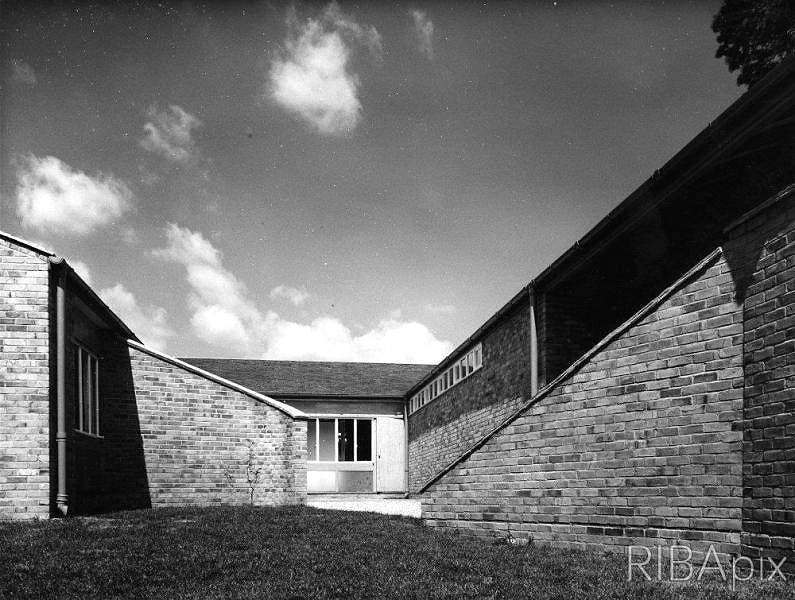|
In December 1955 The Architectural Review published an essay by Reyner Banham titled “The New Brutalism”, which defined for the first time, the bold, new architecture emerging from Britain and Europe in reaction to the watered down modernism of the immediate post war period. The word Brutalism had been used two years before by Alison Smithson in Architectural Design when describing a project for a house in Soho. The origin of the term “Brutalism” has a few different origin stories, from the straightforward (from Breton Brut, the French term for raw concrete) to the more fanciful (an amalgamation of Peter Smithson’s nickname, Brutus, and Alison’s name). The term Brutalism has come to mean any concrete building built in the postwar period, but to begin with it was much more specific, much more of a philosophy than a design guide. The main idea was “truth to materials”, i.e. not disguising the concrete or brick or steel being used in the construction of the building, but making the materials an integral part of its appearance. Banham summarizes Brutalism as “1, Formal legibility of plan; 2, clear exhibition of structure, and 3, valuation of materials for their inherent qualities 'as found'." Banham’s 1966 book, The New Brutalism: Ethic or Aesthetic?, brought together influences on Brutalism such as Le Corbusier and Owen Williams, and examples from around the world. The British examples included buildings by the Smithsons, Yorke, Rosenberg & Mardall, Denys Lasdun, Owen Luder, Lyons, Israel & Ellis, John Voelcker and many others. Banham was born in Norwich in 1922, and after an engineering scholarship studied at the Coulthard Institute of Arts, where Nikolaus Pevsner was one of his tutors. He was employed by the Architectural Review in 1952, where he wrote “The New Brutalism”. His criticism and theories were very influential on the post war architectural scene, through his journalism and books such as “The Well Tempered Environment”, “Theory and Design in the First Machine Age” and “Megastructures”. Banham would also go on to teach at the Bartlett, UCL and the University of California. He died in London in 1988. Brutalism fell out of architectural fashion in the 1970s as architects and local authorities moved away from tower blocks to smaller, less uniform designs, and the oil crisis hit, making it more expensive to build on such a scale. Its reappreciation at the start of the 21st century has seen its praises sung in books and blogs, on social media and even on tea towels, but it is still a highly divisive term, much misused by both friends and foes. So it is worth reminding ourselves where it came from and what it originally meant, 65 years after Banham’s article.
You can read the original article HERE
1 Comment
|
Archives
May 2024
Categories |




 RSS Feed
RSS Feed